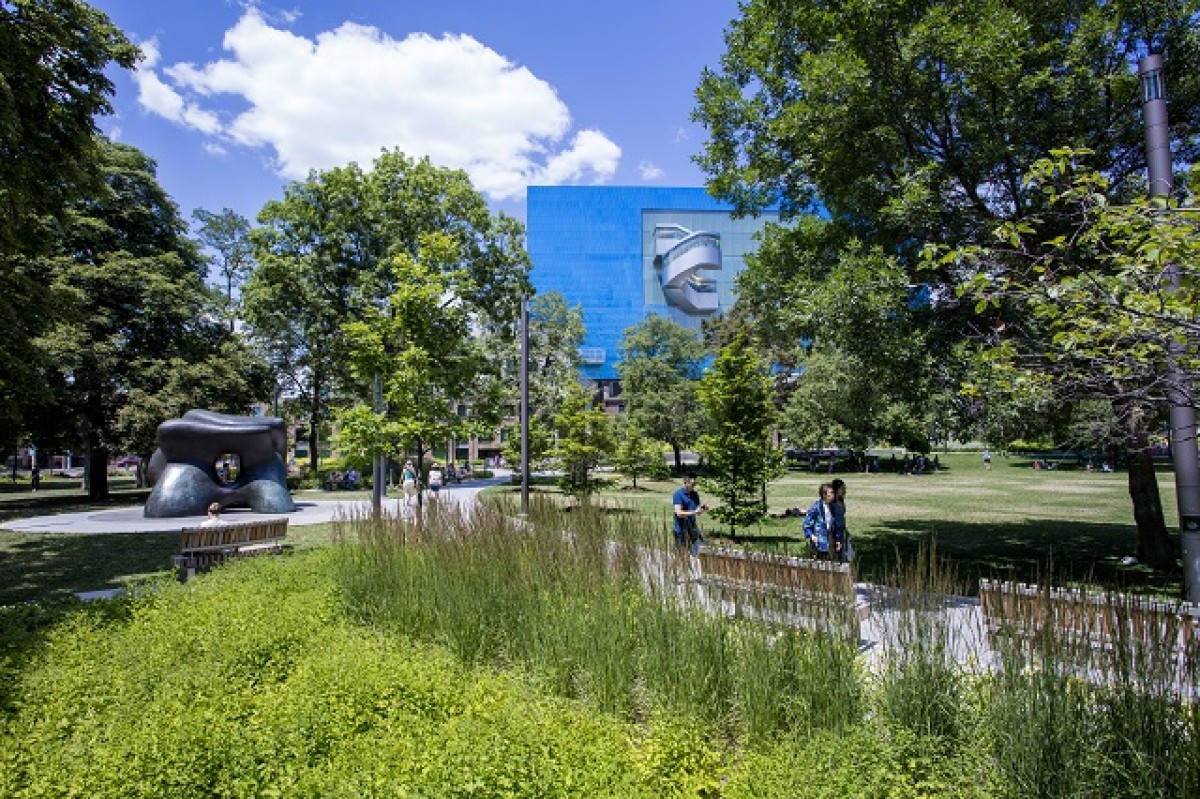AGO goes greener

Grange Park. Image by the AGO
Our major fall exhibition, Anthropocene, reveals the scale of human impact on our planet. Featuring extraordinary large-scale photographs, films and immersive augmented reality (AR), the works span six continents and 20 countries, from landfills in Nairobi to marble quarries in Italy, to logging sites in British Columbia. And the exhibition inspired us to explore, how is the AGO working to be eco-friendly?
Like many museums around the world, the AGO is taking steps to be more environmentally sustainable. Many initiatives have been underway for several years but a few important ones are new. We’re continually investigating best practices to minimizing our environmental impact.
Here’s a snapshot of how the AGO is working to go greener.
- Phasing out plastic water bottles: Recently, caféAGO eliminated plastic water bottles and introduced a water bottle refilling station. In six weeks, this prevented almost 192 pounds of plastic waste. We’re also running a pilot project in caféAGO to test phasing out single-use plastic take-out containers.
- Improving recycling: Recently, we added new signs above our recycling and waste bins to make it easier for visitors and staff to know what goes in each bin. This will help reduce waste and prevent the contamination of recyclables.
- Reducing exhibition-related waste: Since 2015, the AGO Exhibitions and Logistics team has reused or recycled temporary built spaces and walls as much as possible to reduce the amount of construction-related materials required for each exhibition.
- Water efficiency: Most water fixtures in the AGO (about 90 per cent) are low-flow fixtures to ensure water efficiency.
- Paper efficiency: The AGO has used green-certified toilet paper for years. We’re converting many of our paper towel dispensers to automatic sensor electric hand dryers to reduce paper waste.
- Non-toxic cleaning products: The primary cleaning product used by the AGO is hydrogen peroxide-based, resulting in almost no chemical by-products.
- Lighting efficiency: A vast majority of our lighting is high-efficiency LED.
- HVAC efficiency: Carbon dioxide sensors are used in select high volume gallery spaces and the shipping dock. They are automated to introduce fresh air based on sensor input and provide alarms to Operations and Security.
- Insulation efficiency: Windows are triple-glazed with UV filtration and curtain wall (insulation) systems are designed to withstand higher internal humidity levels. Light sensors ensure that natural light is prioritized.
For more information about the AGO’s eco-friendly initiatives, click here.
See the exhibition that inspired this blog post. Timed-entry tickets for Anthropocene are on sale now at AGO.ca, in person and by phone.
Are you an AGOinsider yet? If not, sign up to have stories like these delivered straight to your inbox every week.
Presenting Sponsor
Presenting Sponsor
In Partnership with
In Partnership with
Lead Supporter
Lead Supporter
Generous support from
Generous support from
Generous assistance from
Generous assistance from
With additional assistance from
With additional assistance from
Government Partners
Government Partners



